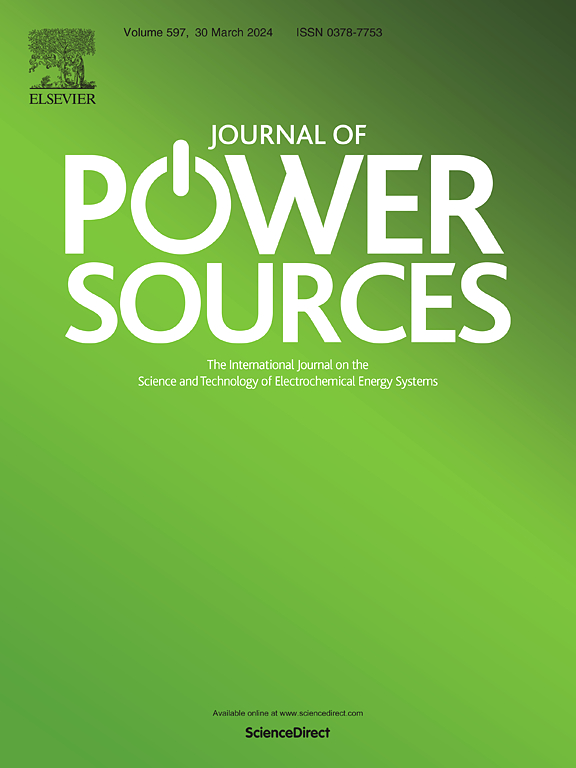Electrochemical activation endows iodine-doped bismuth telluride with rich vacancies for highly performance aqueous zinc-based battery
IF 8.1
2区 工程技术
Q1 CHEMISTRY, PHYSICAL
引用次数: 0
Abstract
Researchers are increasingly interested in bismuth chalcogenides (BCs) as cathode materials for aqueous zinc-based batteries (AZBs) due to their ultra-flat voltage plateau. However, the practical application of BCs is limited by their insufficient capacity, which results from poor conductivity and slow ion diffusion. To address these challenges, we propose a novel approach utilizing iodine-doped Bi2Te3 (IBT) sheets with a unique porous structure as a cathode material. Density functional theory calculations indicate that iodine doping significantly reduces the energy barrier for tellurium vacancy formation. Due to its abundant defects, IBT demonstrates a superior ion diffusion coefficient in comparison to pure Bi2Te3 (BT). Additionally, the introduction of iodine heteroatoms imparts conductor-like properties to IBT, thereby enhancing its electronic conductivity. Consequently, the IBT cathode exhibits a satisfactory capacity of 320 mA h g−1 at a current density of 0.5 A g−1. When cycled at 20 A g−1, the IBT cathode shows an initial capacity of 176.6 mA h g−1 and maintains a substantial capacity of 150.5 mA h g−1 after 2000 cycles. This study conclusively demonstrates that halogens can serve as effective dopants to modify the physicochemical characteristics of BC materials, suggesting a promising strategy for the development of high-performance cathodes in AZBs.
求助全文
约1分钟内获得全文
求助全文
来源期刊

Journal of Power Sources
工程技术-电化学
CiteScore
16.40
自引率
6.50%
发文量
1249
审稿时长
36 days
期刊介绍:
The Journal of Power Sources is a publication catering to researchers and technologists interested in various aspects of the science, technology, and applications of electrochemical power sources. It covers original research and reviews on primary and secondary batteries, fuel cells, supercapacitors, and photo-electrochemical cells.
Topics considered include the research, development and applications of nanomaterials and novel componentry for these devices. Examples of applications of these electrochemical power sources include:
• Portable electronics
• Electric and Hybrid Electric Vehicles
• Uninterruptible Power Supply (UPS) systems
• Storage of renewable energy
• Satellites and deep space probes
• Boats and ships, drones and aircrafts
• Wearable energy storage systems
 求助内容:
求助内容: 应助结果提醒方式:
应助结果提醒方式:


